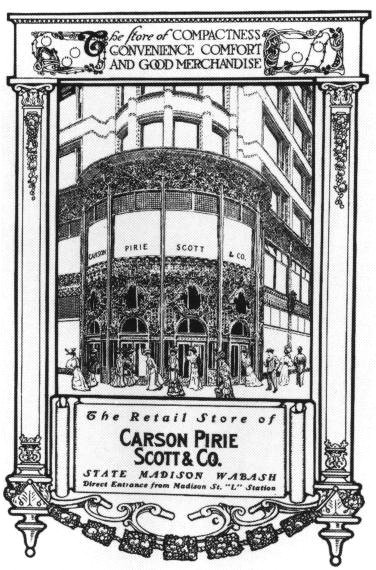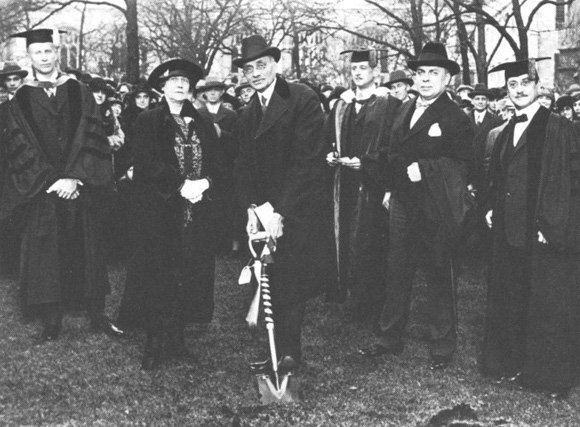Merchandisers and Advertisers
University benefactors founded and ran many of Chicago's great retail establishments, including Marshall Field's, Carson Pirie Scott & Co., Mandel Brothers, Wieboldt's, Goldblatt's, Walgreen's drug stores, mailorder giants Sears, Roebuck and Montgomery Ward's, as well as hardware and railroad supply companies. "Not known as a great giver," Marshall Field donated land and sold additional parcels for the original site of the University and later initiated a challenge grant that raised $1,000,000 in endowment. Thomas W. Goodspeed, who was responsible for much of the University's fundraising, said that "the University did an equally great service for Mr. Field," opening his eyes to the benefits of philanthropy and leading to other gifts, especially for the creation of the Field Museum.
Julius Rosenwald, president of Sears, Roebuck & Co. during its meteoric rise at the turn of the century, became even better known as a philanthropist, believing in "giving while you live" rather than establishing permanent trusts. He sponsored schools for African-Americans in rural areas throughout the South and raised money for YMCA buildings in urban areas, as well as aiding the University of Chicago, the Associated Jewish Charities, and the Museum of Science and Industry.
Adolphus Clay Bartlett
moved to Chicago in 1863 and took up the hardware business. His main
philanthropic interest was the Chicago Home for the Friendless. He became
a close friend of William Rainey Harper and a trustee of the University.
Bartlett donated funds for the men's gymnasium on campus named for his
son, and another son, Frederic Clay Bartlett, painted the interior murals
depicting a medieval tournament.
Executives from the advertising industry also took an interest in the University. Albert Lasker of the Lord and Thomas agency provided an important endowment for the hospital in its early years, and one of his employees, Fairfax M. Cone, who took over the company renamed as Foote, Cone and Belding, served the University years later as a member and chairman of the Board of Trustees. After deciding to leave his successful career at the New York advertising agency of Benton and Bowies, William Benton accepted the invitation of his Yale classmate, Robert Hutchins, to come to the University of Chicago and study its public relations problems. A confidential report was printed for the trustees which incorporated advice on the latest advertising and promotional techniques. Benton advocated better use of radio broadcasting and films to disseminate the University's name and improve its image. Benton also acquired the Encyclopaedia Britannica from Sears and turned over much of its stock to the University, providing an ongoing source of funds from royalties, and initiating along relationship with EB that placed many faculty members in editorial positions.


